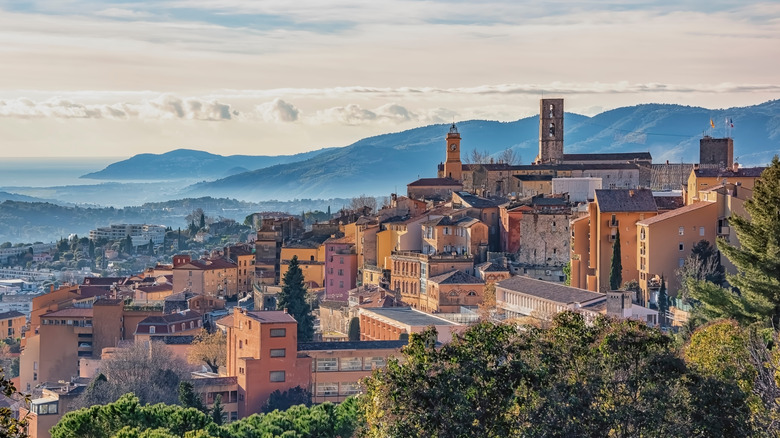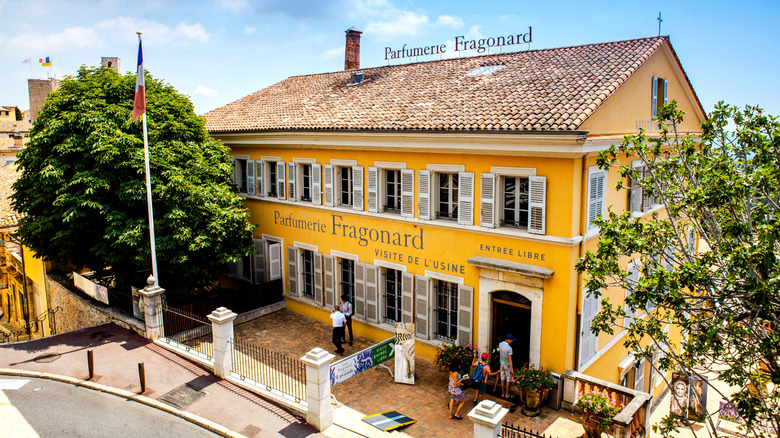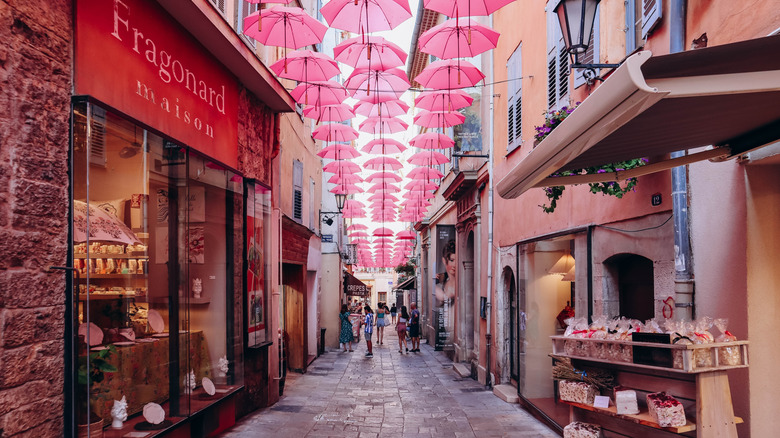The 'Perfume Capital Of The World' Is A City On The French Riviera Brimming With Arts And Culture
When you think of the French Riviera, images of glamorous yachts and luxury beachside resorts probably spring to mind. But this iconic coastline is more than just a paradise for beachgoers. Venture beyond its expensive resorts and you'll discover hidden gems, like the little-known town of Menton or the medieval charm of Saint-Paul-de-Vence. Then there's Grasse, a little inland escape that offers breathtaking views and an allure unlike any other place in the world. It's earned the title of the "perfume capital of the world," a distinction it's held since the 17th century thanks to its rich history of perfume-making.
Unlike its bustling Riviera counterparts, Grasse feels slower yet vibrant, with plenty to explore. The surrounding landscape is nothing short of stunning: rolling hills dotted with olive trees, wildflowers, and fields of May rose and jasmine, two ingredients that are essential to some of the world's most famous perfumes, including Chanel No. 5 and Miss Dior. The town's climate and soil make it an ideal spot for cultivating these fragrant blooms, fostering both centuries-old perfume houses like Galimard and modern brands such as Le Labo.
From Cannes, Grasse is just a 30-minute bus ride or a 20-minute drive away. You can also get there from Nice with a 40-minute drive or in a little over an hour by bus, offering sweeping views of the Côte d'Azur countryside along the way. Accommodation options range from quaint guesthouses tucked into the hills to luxurious boutique hotels. Wherever you stay, you'll find that Grasse has a scent and spirit all its own — a perfect prelude to your journey through its aromatic streets.
A fragrant tour through the medieval streets of Grasse
Founded in the 12th century, Grasse began as an independent republic. Its medieval roots remain evident in the winding alleyways and cobblestone streets of its old town. One of its most striking landmarks is the Notre-Dame du Puy Grasse Cathedral, built in the mid-13th century, where you can admire works by Peter Paul Rubens and other masters. Walking through these streets feels like stepping back in time, surrounded by Provençal architecture and historic charm at every turn.
Surprisingly, Grasse wasn't always synonymous with fragrance. In its early days, the town was a hub for leather tanning — a lucrative but pungent industry. To mask the stench of animal hides and lye, tanners began experimenting with floral scents, blending animal fat with flowers. Over time, perfume-making overtook leather tanning, and Grasse established itself as a leader in the art of fragrance. Jean de Galimard, one of the first tanners-turned-perfumers, founded Galimard Perfumery in 1747, which still operates today. Visitors can tour its factory to learn about traditional perfume-making methods and even craft their own custom scents in a workshop.
Meanwhile, at the iconic Molinard and Fragonard perfumeries, you'll find fascinating exhibits showcasing antique perfume equipment and even medieval pomanders once used to mask unpleasant odors. The International Perfume Museum, the only one of its kind, delves deeper into the cultural significance of fragrance through the ages. And if you want to experience the source of it all, schedule a tour of Domaine de Manon, where May rose and jasmine are harvested in the same way they have been for generations.
Museums, markets, and Michelin stars in Grasse
Grasse has a cultural scene with something for every visitor. Just around the corner from the International Perfume Museum lies the Museum of Provençal Costumes and Jewelry, a charming showcase of 18th- and 19th-century regional attire housed in a historic mansion. Next door, the Musee d'Art et d'Histoire de Provence invites you to step back in time with rooms preserved in their original 18th-century layouts. At the center of these cultural treasures is the Jardin des Plantes, a public garden perfect for unwinding among lush greenery and streets lined with pink umbrellas.
Grasse's Provençal markets and culinary offerings are a feast of Southern French tradition. On Saturdays, the Place aux Aires comes alive with vendors selling fresh produce, cheese, flowers, and artisanal goods. For a taste of the region's unique flavors, stop by Café Fleur for flower-infused teas and cocktails, enjoy a relaxed lunch at Café du Palais, or indulge in Provençal delicacies at the Michelin-starred Jacques Chibois at La Bastide Saint-Antoine.
Timing your visit is key to experiencing Grasse at its most colorful. As you're planning a trip, be sure to read up on the time of year Rick Steves says the French Riviera is most overrated. Another timely factor to consider is Grasse's flower festivals. In May, the Rose Festival transforms the old town with music, dancing, and roses adorning its buildings. August brings the Jasmine Festival, a lively three-day celebration featuring concerts, a parade, and fireworks. Whether you're exploring its festivals, gardens, or markets, Grasse is proof that, sometimes, life really is about stopping to smell the roses.


